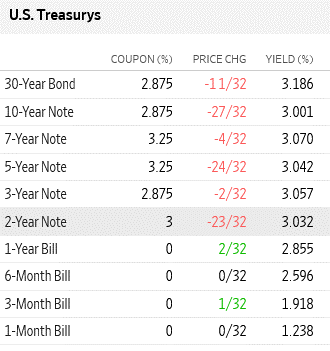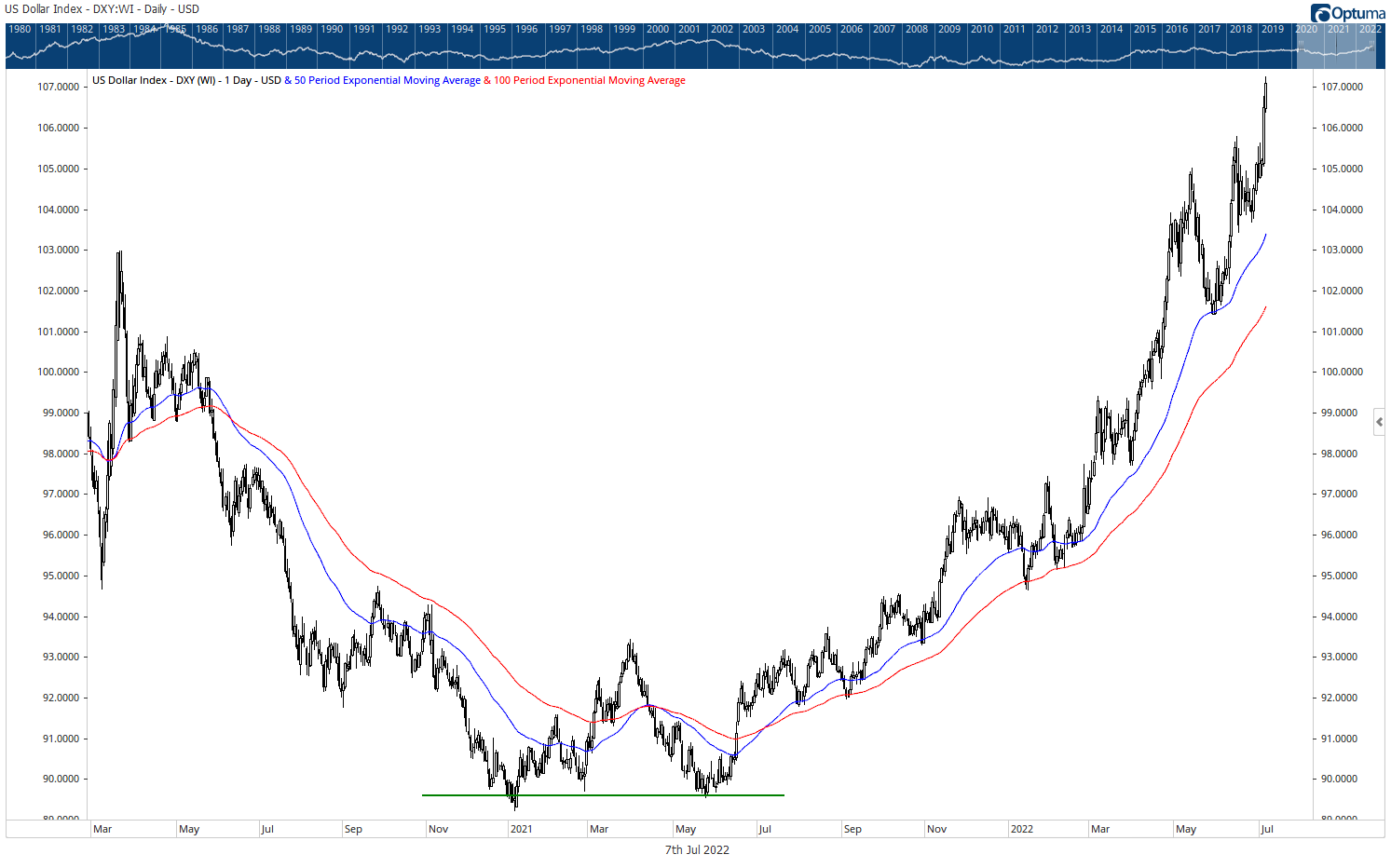The next phase of the bear – why there's a margin crunch ahead
In my last wire two weeks ago, I argued that inflation was a rear-view mirror story.
Since then, you’ve seen further data on the macro front that that is indeed the case.
Just take a look at the falls across the commodity complex over just the past month (as of yesterday):
- Brent Crude: down 16.2%
- US gasoline: down 19%
- US heating oil: down 18%
- Copper: down 22%
- Nickel: down 26%
- Zinc: Down 20%
- Tin: down 27%
- Iron ore: down 23%
- Cobalt: down 17%
- Wheat: down 24%
- Cotton: down 31%
The precious metals have gotten off lightly, with gold and silver down 6% and 12% respectively.
The broader CRB commodity index is down 15%, while the London Metals Exchange index is down 21%.
Phew…that’s quite a list.
Sure, you could see a relief rally unfold in the short term, but clearly, tighter monetary policy is having an impact. It’s hitting demand, especially in the US and Europe. And that will take the wind out of inflation.
Yesterday, the US bond market gave another signal that a recession is coming to the US. (The first one occurred in April.)
That signal is an inversion of the yield curve. It means that longer-term bond yields are lower than shorter-term bond yields. While bond yields moved higher overnight, the 10-year bond yield, at 3%, is lower than the 2-year yield at 3.03% (see image below).

This is just one indicator, of course. And some people put more weight on different parts of the curve. But here, the 10-year yield is lower than the 2, 3, 5 and 7 year yields.
That suggests a bond market view that a still aggressive Fed (keeping the 2-year yield higher) will probably push the US economy into recession.
So what, you may ask? What does that mean for you as an investor?
Well, it means companies are set for a margin crunch and profit downgrades in the months ahead. This means this bear market isn’t over and won’t likely be for a while yet.
Here’s the issue…
We’re in the midst of a ‘regime shift’
The lagging remnants of inflation in the real economy are bumping up against the leading indicators of deflation in the financial economy.
There will be few winners in such a shift.
For companies, it means demand headwinds (deflation) are hitting at the same time as upward cost pressures (inflation). The result is compressed margins, lower profitability, and lower share prices.
This is how bear markets work.
The good news is that this is a natural progression of the bear market. And the more it progresses, the closer it is to ending.
Which doesn’t make it any easier to deal with in the short term.
But the reality is that financial conditions are tightening drastically. And the global economy is slowing sharply.
You can see this most clearly in the movement of the US dollar.
The chart below shows the US dollar index, which measures the dollar against a range of other fiat currencies, notably the euro, yen and pound.

Since the May 2021 low, it’s rallied nearly 20% against this basket of other currencies. It’s moved nearly 6% since the start of June. That’s a very big move in the world of currencies. It’s now trading at 20-year highs.
This is why commodities have been hit lately and why gold has struggled for so long.
Moreover, it's why gold stocks have been so under the pump.
The canary in the coal mine when it comes to margins
That is, the whole Aussie gold sector suffered a vicious de-rating a few weeks ago following a number of reports of rising cost pressures. If that wasn’t bad enough, now you have gold price weakness putting pressure on the top line too!
That’s deflation meeting inflation…and it’s probably coming to a stock near you in the next couple of months.
So enjoy this current bear market rally, but be realistic about it. Stocks are bouncing off very oversold levels. The primary trend remains down.
As an aside, I wonder if the idea of a ‘tradeable’ bear market rally is valid in a period of quantitative tightening (balance sheet shrinkage, which removes liquidity from the system), at the same time as the Fed is hiking rates into a sharply slowing economy?
I mean, I’m not sure US markets have had to deal with this sort of tightening before.
Consider this…
Real long-term US interest rates (using an average of 10 to 30-year bond yields) are at their highest level since November 2018 (currently 1.16% compared to a November 2018 peak of 1.34%).
You all know what happened then, right? Powell pivoted and returned to good old easy money. (And gold started a big two-year bull market.)
I’m not saying that will happen right away. The Fed needs to make sure that it has slayed the ‘inflation dragon’ first (a dragon it created, by the way).
But in the same way that central banks were too late in raising rates, they will potentially make the same mistake in the other direction. That is, they will keep hiking despite increasing evidence that inflation is yesterday’s story.
This dynamic will put upward pressure on real interest rates, which will ultimately put downward pressure on asset prices.
The economy was slowing fast in 2018 when Powell pivoted. He can’t do so this time around because of the perceived inflation problem.
But the global economy is now carrying considerably more debt than it was back in 2018. So real rates at these levels are not sustainable.
Policymakers won’t ever admit it. But the only way to get out of the huge debt burden we find ourselves in is to run policies that produce negative real rates. Otherwise, you risk deflation.
That is the signal the market is sending now, with real long-term rates at 1%+. That is why the dollar is soaring, commodities are correcting sharply, and why stocks are in a bear market.
The next phase of the bear will be the margin compression I mentioned earlier. This will result in stocks taking another leg lower.
Then, by September, I expect central banks, and certainly the Fed, to move to an ‘on hold’ stance. By then those positive real rates will really be starting to bite.
And don’t forget, quantitative tightening is scheduled to double to around US$100 billion per month on 1 September.
Neither the stock market nor commodities, for that matter, are going to like that.
The good news is that this ugly macro combo will produce lower stock prices in the months ahead. It will provide plenty of investment opportunities at the back end of the year so remain patient and be stingy with your cash.
Never miss an insight
If you're not an existing Livewire subscriber you can sign up to get free access to investment ideas and strategies from Australia's leading investors.
And you can follow my profile to stay up to date with other wires as they're published – don't forget to give them a “like”.
3 topics

